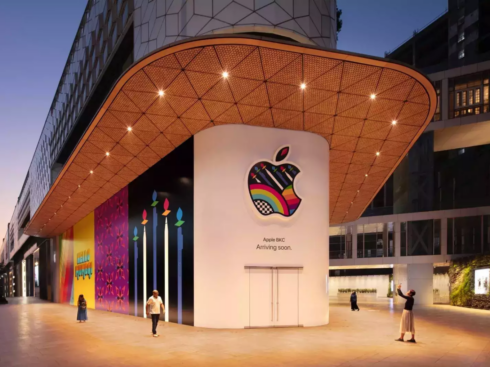
Today innovation is part of anything and everything we do. Whether you are a manager in a global corporation, an entrepreneur from a startup company, in a government office, or a teacher from an elementary school, everyone is expected to make their respective processes smarter – to do better with less.
Innovation coupled with design dramatically improves the experience of products and services. The design mode of thinking applies to create systems, processes, and procedures to improve the quality of life for end customers. A demonstrated model for success by using design principles to strategy and innovation has outperformed the best of the best companies over the past ten years.
Design-led companies such as Apple, Airbnb, and much more have proved that design has evolved beyond making objects. Hence, design thinking is to its core enabling organisations to think like designers and develop effective strategies for development and bringing change.
A New Way To Look At Design Thinking
If we go by definition, then Design thinking is a human-centred and collaborative approach to problem-solving that offers creative, iterative & practical solutions. Across levels, design thinking integrates business, technology, and people with a methodology that helps one to become an innovative thinker and uncover creative opportunities. It also brings about the right balance between analytical and intuitive thinking.
With the constantly changing world, a more advanced concept of design thinking is now in practice. It now starts with people by understanding that their explicit and implicit needs that can be met by using design solutions.
As considered, design as a discipline fuses creativity and practicality for creating solutions. An essential element here is about the transformation of design into a process for creating an actual and new state of the system – a system which helps create solutions by considering real user needs.
For example, we can install coordinated traffic light system to manage the vehicle influx at a particular location. An ideal way to design this system will be to enable the system to handle as many conditions and challenges that can be managed effectively.
Crossing The Boundaries Of Expertise
Though design thinking is not a new concept and it is now getting popularised with its wider application across multiple industries, it is not restricted to any area of expertise.
With practice, it has been considered as efficient than the traditional method of solution creation, as it draws upon logic, imagination, intuition and systematic reasoning, being applicable to all walks of life. It further helps to create new and innovative ideas and to solve problems for exploring possibilities of what could be and to create desired outcomes that benefit the end users.
From the early 1950s across the world, the presence of design became pervasive to the presentation of products with the mass launch of consumer electronics, cars, and consumer packaged goods. However, from 1960 onwards, design turned its focus to functionality.
Apple is a pioneer in this process, with a new era dawned in the 1980s that aimed at developing the product and enhancing the consumer feel and experience. It is a classic example of how design has evolved and has driven the evolution of a new product. Aimed at maximising consumer satisfaction – understanding what the customer wants and giving it to them which is beyond technology and aesthetics to create fresh products that establish emotional connect.
The Two E’s: Empathy And Experimentation
Design thinking basically emphasises on two E’s – Empathy and Experimentation. Empathy is one of the crucial aspects in framing and identifying the right problem. For India, it is a process that makes sure one goes back to validate their ideas and refine them – a module which forms only a part of the elaborate process of designing.
No matter whether you are performing a support function, an engineering function or a marketing function, you can apply design thinking in your context. For instance, the recently launched ‘Make in India’ campaign aims to overcome the manufacturing deficit by using principles of design thinking.
Though to get maximum value out of services it is necessary to think about things in a comprehensive way, in the Indian context, design thinking is not about designing as traditionally understood – it is where design makes a stride in the overall evolution process.
The Future With Design Thinking
From an academics perspective, design thinking embraces a range of functions and disciplines, This includes seeking out people’s need and try to meet them with technology and business strategy – to create customer value and capitalise on market opportunity.
Design Thinking as an approach helps solve not only today’s problems but even anticipates those that lie ahead. It is a mixed suite of tools, methods, and processes; not a finite product but a mindset within an organisation. Many Indian companies from Silicon Valley are banking on developing a design thinking approach to creating the optimum value for customers.
For India, it will enable addressing the need for tomorrow by creating robust systems. A likely trend is about the creation of low-cost smartphone that runs on little battery power and enables accessing e-governance facilities. It covers both hardware and software of the product. With a favorable policy environment, it will provide innovative design-thinking companies with an environment that supports manufacturing or service offerings.
In Conclusion
The aim of the leading Indian companies should be to create value, wherever with whatever has to be to create an ecosystem that supports the growth of design thinking approach. Design Thinking benefits from starting both bottom-up and top-down at once; inviting everyone who wants to be an innovator, not forcing everyone to go to class. It is all about offering freedom to experience.
The quality and originality of ideas will depend on how well one understands their target group. By enabling collaboration, a new style of learning a new culture of learning will help organisation prevail for a better future for everyone.
About The Author
[Sanjay G. Dhande is the Chief Mentor at Avantika University & Former Director of IIT Kanpur)


























